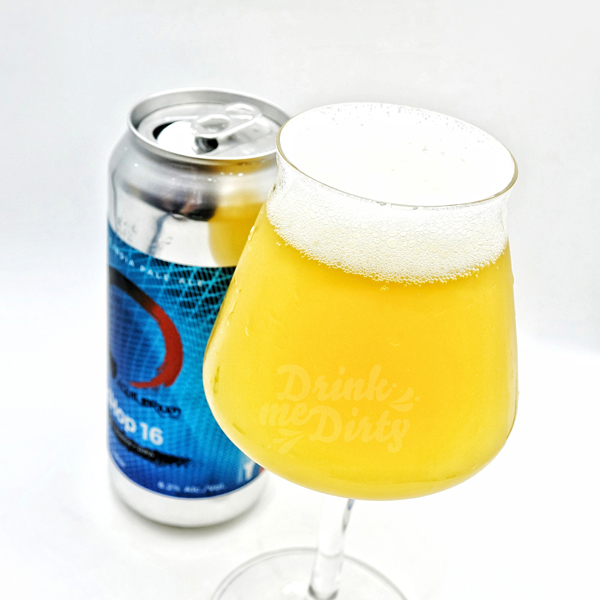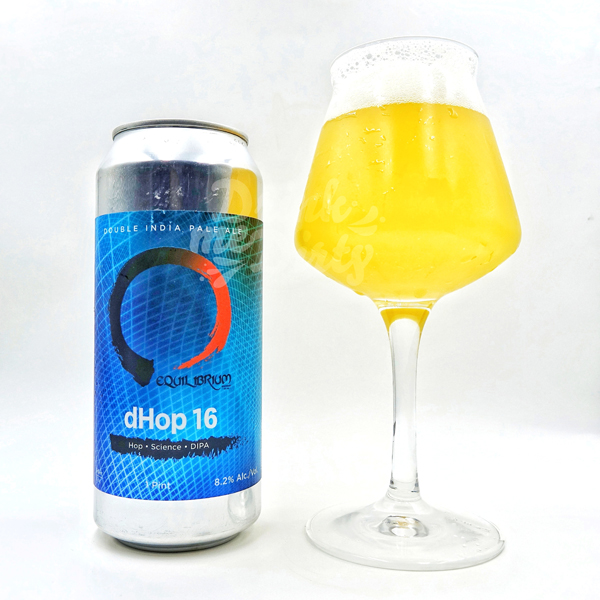Name: dHop16
Brewer: Equilibrium Brewery (United States)
Style: Double IPA
ABV: 8.2%
Review Year: 2019
The beer scientists of Equilibrium (New York) deploy a new experimental dry hop technique for this iteration of dHop16, a juicy and thirst-quenching Double IPA brewed with Simcoe, Mosaic, and Citra hops. dHop is a series where the brewers explore the abundance of malt bills and hop combinations.
Equilibrium Brewery is headed by two Massachusetts Institute of Technology (MIT) engineering graduates, Ricardo Petroni, and Peter Oates. The duo’s mission is to produce well-balanced and drinkable beers by applying scientific principles in their brewing.
STYLE GUIDELINES
This beer is being evaluated as a Double IPA (22A) in the context of the 2015 Beer Style Guidelines of the Beer Judge Certification Program (BJCP). The most current version of the guidelines can be found on the BJCP website.
TASTING NOTES
dHop16 is bright yellow-orange with substantial haze. The nose offers bright fragrant tropical and stone fruits such as pineapples and unripe mangoes. The medium body and moderate level of carbonation of the dHop16 were conducive to showcase the juicy and citrus flavors reminiscent mangoes (close to ripeness) and dalandan. The generally bright and citrus aroma and flavor profiles are most likely contributed by the Citra, Simcoe, and Mosaic hops used. Meanwhile, a similar profile was noted after a sip.

THE VERDICT
Given that this is the only dHop iteration and the second beer from Equilibrium we have reviewed so far, we do not have sufficient evidence to prove or disprove the effectiveness of this so-called new experimental dry hop technique implemented. Perhaps, we need to drink and review more beers from Equilibrium to increase the sample size and be able to form unbiased, evidence-based inferences.
Regardless, dHop16 is a masterfully crafted, tasty, and juicy Double IPA from the brewery that aims to deploy research and inspiration to achieve well-balanced drinkable, and massively-flavorful beers. You only need a sample size of one to arrive at this conclusion.

